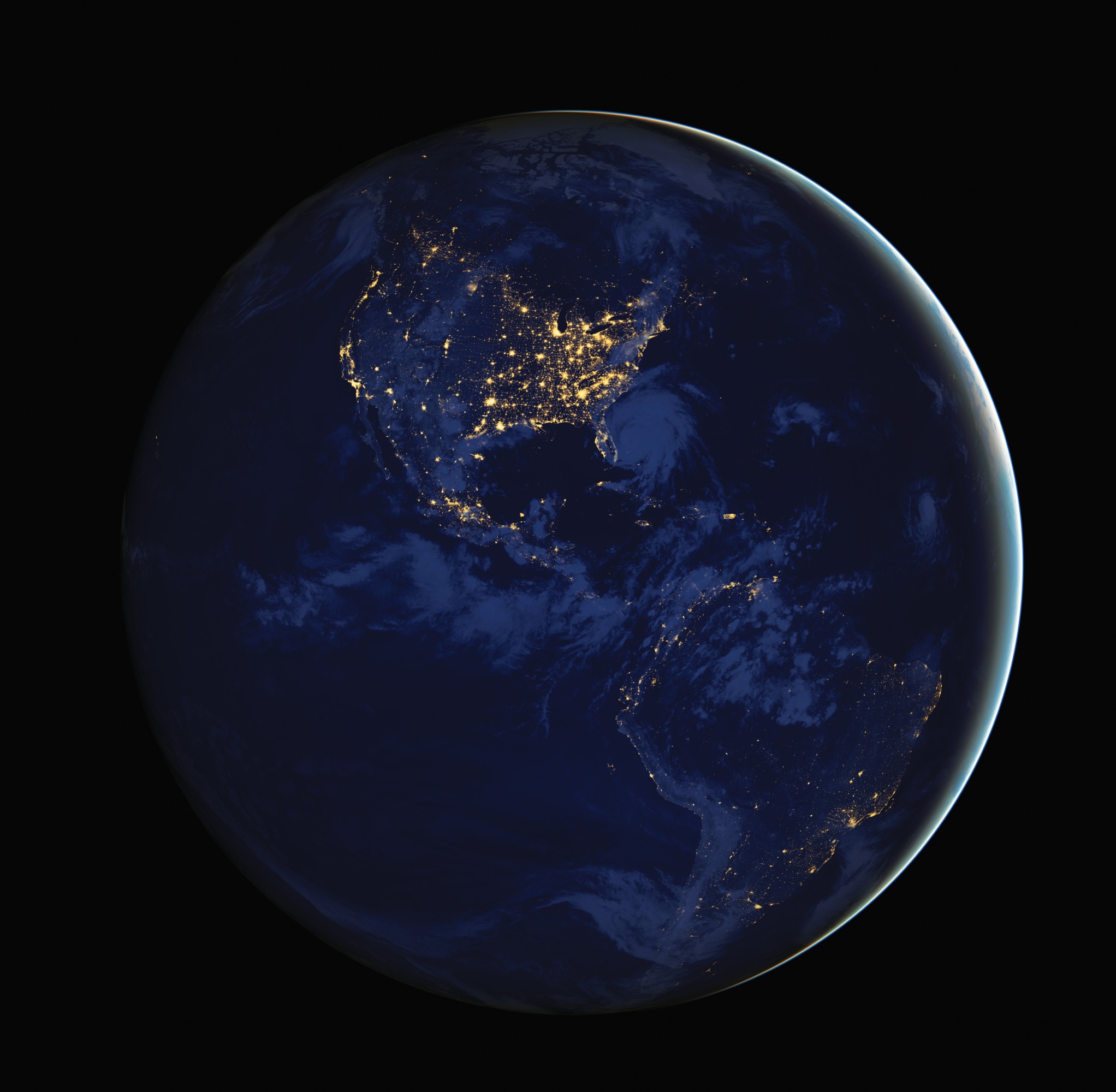
NASA
Specifications in the current proposal provide a starting point for planning, including a color temperature cutoff of 3,000 K in line with Pittsburgh’s dark-sky ordinance, which passed last fall. However, Martinez says that is the maximum, and as they look for consultants, they’ll be taking into account which ones show dark-sky expertise. The city is also considering—budget and infrastructure permitting—a “network lighting management system,” a kind of “smart” lighting that would allow them to control lighting levels and know when there is an outage.
Martinez says there will be citywide engagement and updates on the status as critical milestones are reached. “We’re in the evaluation period right now,” she says, adding that the next milestone is authorization of a new contract. She acknowledges there is some “passionate interest in street lighting,” and that she too is anxious to see the project come to fruition: “Just because things seem to go quiet doesn’t mean work is not being done.”
While they aren’t meeting with light pollution experts right now, Martinez says the ones they met with during the last proposal round—Stephen Quick and Diane Turnshek of CMU— were “instrumental” in adopting the dark-sky ordinance.
In recent months, Zielinska-Dabkowska says, her “baby” has been the first Responsible Outdoor Light at Night Conference, an international gathering of more than 300 lighting professionals and light pollution researchers held virtually in May. Barentine was among the speakers. “It’s a sign that all of this is really coming along, both as a research subject but also something that attracts the interest of practitioners in outdoor lighting,” he says of the conference.
There is more work to be done, though. The IDA recently released a report summarizing the current state of light pollution research. The 18-page report includes a list of knowledge gaps to be addressed in several areas, including the overall effectiveness of government policies on light pollution. Another is how much light pollution comes from sources other than city streetlights, which a 2020 study found accounted for only 13% of Tucson’s light pollution. It is not clear what makes up the rest, but Barentine suspects the next biggest source in the US and Europe is commercial lighting, such as flashy outdoor LED signs and parking lot lighting.
Working with companies to reduce light emissions can be challenging, says Clayton Trevillyan, Tucson’s chief building officer. “If there is a source of light inside the building, technically it’s not regulated by the outdoor lighting code, even if it is emitting light outside,” Trevillyan says. In some cases, he says, in order to get around the city’s restrictions, businesses have suspended illuminated signs inside buildings but aimed them outside.
Light pollution experts generally say there is no substantial evidence that more light amounts to greater safety.
For cities trying to implement a lighting ordinance, Trevillyan says, the biggest roadblocks they’ll face are “irrelevant” arguments, specifically claims that reducing the brightness of outdoor lighting will cut down on advertising revenue and make the city more vulnerable to crime. The key to successfully enforcing the dark-sky rules, he says, is to educate the public and refuse to give in to people seeking exceptions or exploiting loopholes.
Light pollution experts generally say there is no substantial evidence that more light amounts to greater safety. In Tucson, for example, Barentine says, neither traffic accidents nor crime appeared to increase after the city started dimming its streetlights at night and restricting outdoor lighting in 2017. Last year, researchers at the University of Pennsylvania analyzed crime rates alongside 300,000 streetlight outages over an eight-year period. They concluded there is “little evidence” of any impact on crime rates on the affected streets—in fact, perpetrators seemed to seek out better-lit adjacent streets. Barentine says there is some evidence that “strategically placed lighting” can help decrease traffic collisions. “Beyond that, things get murky pretty quickly,” he says.
